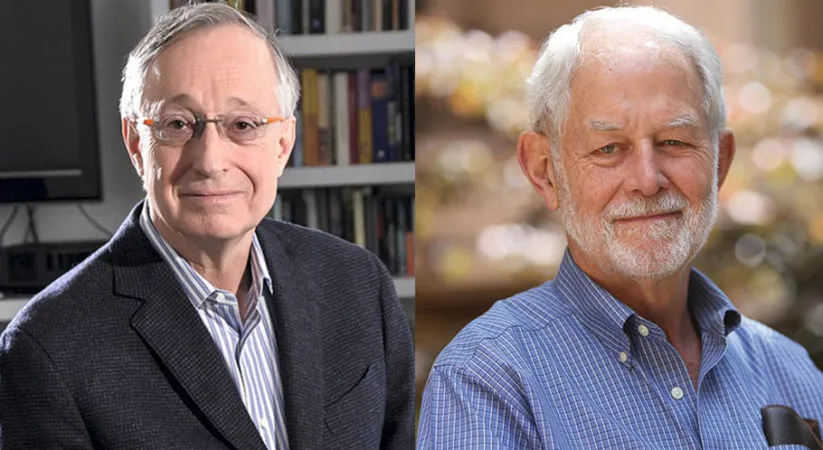Introduction to Paul Milgrom and his work in auction theory
When it comes to the world of auctions, few names stand out like Paul Milgrom. A pioneer in auction theory, Milgrom has transformed how we think about bidding and value maximization. His groundbreaking work delves into various auction types, each with unique processes and strategies that can lead to vastly different outcomes.
Whether you’re a seasoned bidder or new to the auction game, understanding these formats is essential. From English Auctions where transparency reigns supreme to Dutch Auctions that keep participants on their toes, each style offers distinct advantages and challenges. Join us as we explore the top four auction types through the lens of Paul Milgrom’s innovative research and discover how they shape economics across industries.
English Auctions – definition, process, advantages and disadvantages
English auctions are among the most recognizable auction formats. In this type, participants openly bid against one another, with bids increasing incrementally until no higher offers are made.
The process begins when an auctioneer announces the item for sale. Bidders raise their paddles or call out their bids. This continues until only one bidder remains willing to pay more than the others.
One of the key advantages is transparency; everyone can see what others are bidding. This often drives up prices and can lead to higher revenue for sellers. It also encourages competitive spirit among bidders.
However, there are disadvantages too. Psychological factors may pressure participants into overbidding, leading to regret post-auction. Additionally, if many bidders drop out quickly, it can create a less dynamic atmosphere and reduce excitement in certain scenarios.
Dutch Auctions – definition, process, advantages and disadvantages
Dutch auctions are a unique approach to bidding. In this format, the auctioneer starts with a high price that gradually decreases until someone accepts it. This method creates an exciting atmosphere where bidders must act quickly.
The process is straightforward. The auctioneer announces the starting price and lowers it incrementally. As soon as a bidder agrees to the current price, they secure their item. This rapid pace can lead to quick decisions and immediate sales.
One major advantage of Dutch auctions is efficiency. They often conclude faster than other types since bidders do not have time to deliberate extensively.
However, there are downsides too. Bidders may feel pressured into making hasty choices without fully evaluating their options or considering market value before jumping in at lower prices.
This auction type works well for perishable goods like flowers or fish but might be less effective for collectible items where emotional attachment plays a role.
First-Price Sealed Bid Auctions – definition, process, advantages and disadvantages
First-price sealed bid auctions present a unique bidding scenario. In this format, bidders submit their offers without knowing others’ bids. The highest bidder wins and pays the amount they submitted.
The process is straightforward yet strategic. Participants must gauge how much to offer while considering competitors’ potential bids. This often leads to intense competition as each bidder attempts to outsmart the others.
One advantage of first-price sealed bid auctions is transparency in the bidding process. Everyone knows that their offered price determines whether they win or lose. Additionally, it can encourage aggressive bidding strategies.
However, there are notable drawbacks too paul milgrom. Bidders may underbid due to uncertainty about rivals’ intentions, resulting in lower revenues for sellers. There’s also a risk of overbidding—where participants pay more than necessary just to secure a win, leading to regret later on.
Second-Price Sealed Bid Auctions – definition, process, advantages and disadvantages
Second-price sealed bid auctions, often known as Vickrey auctions, are intriguing in their structure. In this format, bidders submit written bids without knowing the others’ offers. The highest bidder wins but pays the second-highest bid instead of their own.
This method encourages honest bidding; participants are motivated to reveal their true valuations. There’s less room for strategic manipulation since overbidding doesn’t lead to higher costs.
However, some disadvantages exist. Bidders may underestimate competition and lose out on valuable items due to cautious bidding strategies. Additionally, it can create confusion among those unfamiliar with how the auction operates.
The simplicity of determining a winner adds appeal but requires trust among participants that everyone will play fairly and transparently.
Comparison of the four auction types based on efficiency and revenue generation
When comparing the four auction types, efficiency is a key factor. English auctions often foster competition among bidders, leading to high final prices. Their open nature encourages transparency.
Dutch auctions, on the other hand, can be quicker but may leave money on the table if bidders hesitate too long. This method relies heavily on timing and bidder confidence.
First-price sealed bid auctions present an interesting dynamic where bidders must strategize their offers without knowing competitors’ bids. However, this can lead to lower revenue generation if participants undercut each other excessively.
Second-price sealed bid auctions tend to drive up bids because participants know they only pay the second-highest price. This format balances risk and potential reward effectively.
Each type has its strengths and weaknesses in terms of efficiency and revenue outcomes, making them suitable for different contexts within market transactions.
Real-life examples of
Traditional English auctions are often seen at art galleries. For instance, Sotheby’s and Christie’s host high-profile events where bidders raise paddles to indicate their offers. The excitement builds as the auctioneer calls out prices, driving competition among potential buyers.
Sealed bid auctions frequently occur in government contracts. Agencies invite companies to submit confidential bids for projects. This method ensures that all participants have a fair chance without influence from competitors’ offers.
Combinatorial auctions come into play in telecommunications when licenses for spectrum are sold. Bidders can place bids on combinations of frequencies, allowing them to secure the right mix for their operations efficiently.
These examples illustrate how different auction types operate within various sectors, showcasing Paul Milgrom’s influential theories put into practice across real-world situations.
Traditional English Auction
The traditional English auction is one of the most recognized forms of bidding. It’s a lively event where participants openly bid against each other. The auctioneer starts with a minimum price, and bidders raise their offers until no one can go higher.
This format thrives on competition. As bids escalate, excitement builds among participants. Often held in public venues or online platforms, it encourages transparency since everyone sees the current highest bid.
One advantage is that bidders can gauge interest levels based on others’ actions. This social dynamic often drives prices upward, benefiting sellers.
However, there’s also pressure involved; some may feel rushed to place higher bids than they intended. For casual buyers, this environment might be intimidating rather than enjoyable.
Despite its drawbacks, the traditional English auction remains popular for art sales and real estate transactions worldwide.
Sealed Bid Auctions
Sealed bid auctions are fascinating in their design. In this format, bidders submit written offers without knowing what others have proposed. This anonymity adds a layer of strategy and excitement.
Once the bidding period closes, all bids are opened simultaneously. The highest bidder wins the item but pays only the amount they submitted. This method can sometimes encourage aggressive bidding strategies while keeping competitors in the dark.
One significant advantage is that it minimizes collusion among bidders. Since no one knows each other’s bids, there’s less chance for conspiracy or group tactics to form.
However, sealed bid auctions can lead to inefficiencies. Bidders may underbid out of fear of overpaying or misjudge how much they should offer based on incomplete information about others’ valuations. Balancing risk and reward becomes crucial in these scenarios.
Combinatorial Auctions
Combinatorial auctions represent a fascinating evolution in auction theory. Unlike traditional formats, they allow bidders to place bids on combinations of items rather than just individual lots. This flexibility can lead to more efficient outcomes.
Imagine a scenario where multiple items are interdependent. A bidder might value two pieces together significantly more than if purchased separately. Combinatorial auctions enable this strategic bidding, unlocking hidden values.
These auctions often utilize complex algorithms for optimization and allocation, making them suitable for large-scale transactions like spectrum licenses or art collections. However, the complexity also poses challenges in terms of bidder understanding and auction design.
As these types of auctions gain traction, their impact on market efficiency and revenue generation continues to draw attention from economists and participants alike. The combination of diverse interests creates a dynamic environment that reflects real-world scenarios closely.
The Role of Paul Milgrom in the World of Auction Theory
Paul Milgrom is a pivotal figure in auction theory, reshaping how we understand bidding processes. His groundbreaking work has illuminated the complexities of auctions and their impact on market efficiency.
Milgrom’s research has introduced innovative concepts that challenge traditional views. He emphasizes the importance of strategic behavior among bidders, showcasing how it influences outcomes.
His contributions extend beyond academic circles, influencing real-world applications like spectrum auctions. Governments and organizations worldwide have adopted his theories to maximize revenue while ensuring fair competition.
Through his collaborations and publications, Milgrom has fostered a deeper appreciation for auction design. This ongoing dialogue continues to inspire economists and policymakers alike, making him an essential voice in this field.
Conclusion
Paul Milgrom has made significant contributions to auction theory, shaping our understanding of how different auction formats function. Each type of auction—English, Dutch, first-price sealed bid, and second-price sealed bid—offers distinct processes and strategies for bidding.
The English auction stands out for its transparency and competition among bidders. In contrast, the Dutch auction’s rapid pace can create a thrilling atmosphere but might deter some participants due to its unique structure. First-price sealed bid auctions offer anonymity within bids but require careful strategic planning from bidders. Meanwhile, second-price sealed bid auctions encourage honest bidding by enabling participants to pay just above the next highest bidder’s price.
When comparing these types based on efficiency and revenue generation, it’s evident that no single format is superior in all circumstances. Different situations may call for tailored approaches depending on the assets being sold or the objectives of the sellers involved.
Real-life examples emphasize this variety: traditional English auctions are often seen in art sales; sealed bid auctions play a crucial role in government contracts; combinatorial auctions allow complex bids involving multiple items at once.
Paul Milgrom’s work continues to influence how we understand these dynamics today. His insights have opened new avenues for effective resource allocation through innovative bidding strategies and structures that enhance market efficiency. As markets evolve, so too will our appreciation for his theories in practical applications worldwide.








